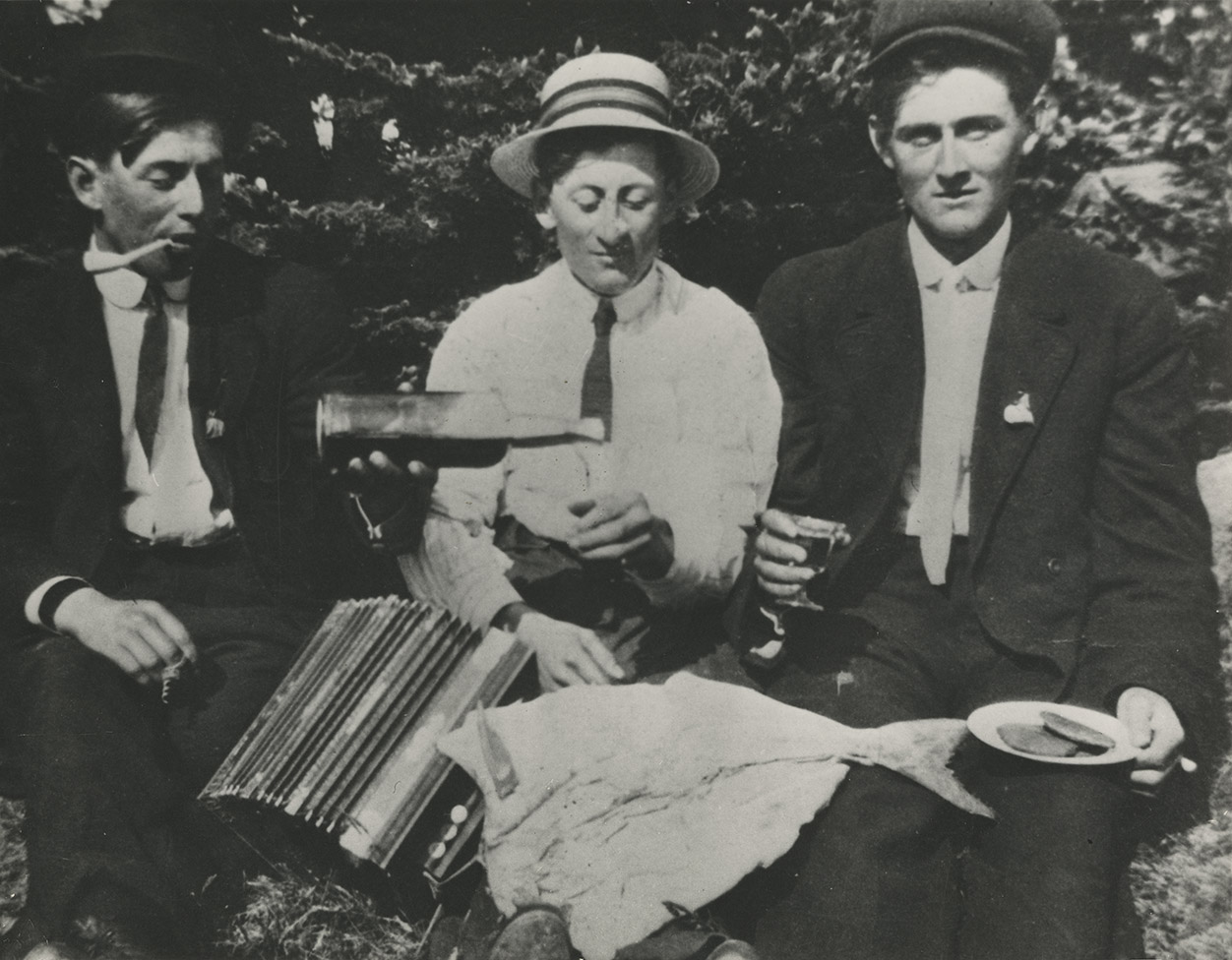Council of Nova Scotia Archives
Centre Acadien, Université Sainte-Anne
Social life in Clare: eating, drinking, singing, dancing
Musical tradition and social life - In Clare, music has always played an important role in the lives of Acadians. During the first half of the twentieth century, residents gathered regularly to do collective work, but also to entertain each other, exchange news, eat, drink, dance and sing.
The photo illustrates some key aspects of this era’s social life: a dry cod, molasses biscuits, wine and an accordion.
Back then, folk songs flourished; in addition to singing during gatherings, people sang as they worked. The inhabitants, who had brought along the traditional songs of France, continued to enrich their repertoires by learning new songs. To recall the words, many wrote them in notebooks.
Households that owned an organ, as well as those containing accordion and violin players, were very popular. In Clare, certain communities were known for their musical talent. The area formerly known as the “Trécarré”, comprised of the villages of Bangor, Saulnierville Station and “Pipe Town” (now a section of the parish of Saulnierville near the old railway in the vicinity of the Eustache Comeau and Maza roads), is known for producing talented young musicians such as Jackie Comeau and Brian Melanson, two of the founding members of the musical group Grand Dérangement, and fiddlers Johnny Comeau and Kenneth Saulnier.
The arrival of mass media strongly influenced Clare’s musical tradition. Thanks to exposure to radio stations, such as the powerful station broadcasting from Wheeling, West Virginia from the 1940s to the 1950s, and WMEX (Boston) in the 1960s, local musicians began playing country, bluegrass and rock. Passing down old songs quickly declined and, over time, new entertainment has replaced the activities of the past and made gatherings less frequent.
Topic: Arts and Culture
Date: [early 1900s]
Reference: Harold Robichaud Collection Centre Acadien Series A, photo 54
For more information, visit the Centre Acadien website.


